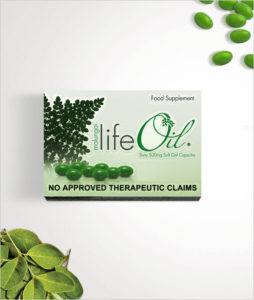Want to know the best part on malunggay for heart?

In a study conducted by the Yale School of Public Health in New Haven, Connecticut, about 3,500 heart attack survivors were asked whether they considered themselves at risk of having CVDs. While 53 percent answered in the affirmative, out of the remaining 47 percent of those who had been told that they were at risk, only 49 percent discussed their heart condition with their doctors.
CVDS: CAUSES AND SYMPTOMS
Common risk factors that cause CVDs: (Lifted from www.thedacare.org)
| Risks that cannot be controlled: | Risks that can be controlled: |
|
|
Five general warning signs or symptoms of cardiovascular diseases: (Lifted from www.webmd.com)

 1. CHEST DISCOMFORT
1. CHEST DISCOMFORT
It’s the most common sign of heart danger. If we have a blocked artery or are having a heart attack, we may feel pain, tightness, or pressure in our chest. The feeling usually lasts longer than a few minutes. It may happen when we are at rest or at work.
 2. NAUSEA, INDIGESTION, HEARTBURN, OR STOMACH PAIN
2. NAUSEA, INDIGESTION, HEARTBURN, OR STOMACH PAIN
Women are more likely to feel these types of symptoms than men. While we may have an upset stomach for many other reasons that may have nothing to do with our heart, it is good to note that it can happen during a heart attack.
 3. DIZZINESS OR LIGHTHEADEDNESS
3. DIZZINESS OR LIGHTHEADEDNESS
A lot of things can make us lose our balance or feel dizzy for a moment such as hunger or sudden movement. But if we suddenly feel unsteady, with discomfort in our chest or shortness of breath, it could mean that our blood pressure has dropped because our heart is not able to pump normally.
 4. LONG-LASTING COUGH
4. LONG-LASTING COUGH
Long-lasting cough that produces white or pink mucus can be a sign of heart disease. This happens when the heart cannot keep up with the body’s demands, causing blood to leak back into the lungs.
5. SWOLLEN LEGS, FEET, AND ANKLES
This could be a sign that the heart does not pump blood as effectively as it should. When the heart cannot pump fast enough, blood backs up in the veins and causes bloating. Heart disease can also make it harder for the kidneys to remove extra water and sodium from the body.
HOW TO PREVENT CVDs
Cardiovascular diseases may be fatal, but they also may be prevented. According to Dr. Dean Ornish, Clinical Professor of Medicine at the University of California, “99% of heart disease is preventable just by changing our diet and lifestyle.”
The following are things we may do as a lifestyle to help prevent CVDs: (Lifted from www.heart.org | www.adaa.org)
 BE PHYSICALLY ACTIVE. Research has shown that moderate-to-vigorous-intensity physical activity, at 3-4 sessions per week on average 40 minutes per session, may help lower blood pressure and cholesterol, and keep our weight at a healthy level. Even 10 minutes of exercise at a time may offer some health benefits. Studies show that people who have achieved even a moderate level of fitness are much less likely to die early than those with low fitness level.
BE PHYSICALLY ACTIVE. Research has shown that moderate-to-vigorous-intensity physical activity, at 3-4 sessions per week on average 40 minutes per session, may help lower blood pressure and cholesterol, and keep our weight at a healthy level. Even 10 minutes of exercise at a time may offer some health benefits. Studies show that people who have achieved even a moderate level of fitness are much less likely to die early than those with low fitness level.
REDUCE STRESS. A few studies have noted a relationship between stress and the risk of heart disease in a person’s life. For example, people under stress may over-eat, start smoking, or smoke more than they otherwise would. Research has even shown that stress reaction in young adults predicts middle-age blood pressure risk. To address stress, take deep breaths (inhale and exhale), get enough sleep, and limit alcohol and caffeine intake.
 CHOOSE GOOD NUTRITION. A healthy diet is one of the best ways to fight CVDs. The food we eat (and the amount we consume) can affect other controllable risk factors: cholesterol, blood pressure, diabetes, and overweight. Choose nutrient-rich foods that have multivitamins, minerals, fiber, and low to zero calories. Choose a diet that emphasizes intake of vegetables, fruits, and whole grains; includes low-fat dairy products, poultry, fish, legumes, non-tropical vegetable oils, and nuts; and limits intake of sweets, sugar-sweetened beverages, and red meats.
CHOOSE GOOD NUTRITION. A healthy diet is one of the best ways to fight CVDs. The food we eat (and the amount we consume) can affect other controllable risk factors: cholesterol, blood pressure, diabetes, and overweight. Choose nutrient-rich foods that have multivitamins, minerals, fiber, and low to zero calories. Choose a diet that emphasizes intake of vegetables, fruits, and whole grains; includes low-fat dairy products, poultry, fish, legumes, non-tropical vegetable oils, and nuts; and limits intake of sweets, sugar-sweetened beverages, and red meats.
Based on a 2010 World Congress of Cardiology study, “people who have decreased micronutrient intake have a significantly higher risk of coronary heart disease, stroke, heart failure, and all-cause mortality.”
The study which examined 9,450 participants aged 45 and older found that a decreased micronutrient intake was associated with 1.4 times higher risk of death from CVDs in white Americans; 1.3 times higher in African Americans; and 1.6 times higher in Mexican Americans. Dr. Longjian Liu, Associate Professor of Epidemiology at Drexel University School of Public Health in Philadelphia, said that we should ensure that we maintain healthy micronutrient levels to help reduce our future risk of cardiovascular disease.
Good thing, there is Malungai LifeOil!
Malungai LifeOil is made from pure oil extract of premium moringa oleifera leaves and seeds. It has captured in a gel the natural nutrients of moringa as well as its active chlorophyll. And since it is in oil form, nutrients are easier for the body to absorb and digest.
Moringa is also known globally as the “Miracle Tree” for its highly nutritive profile. It contains over 92 nutrients, 46 antioxidants, 36 anti-inflammatories, 18 amino acids, and nine essential amino acids. A nutrient-dense plant, it also has been touted as the “superfood among all other superfoods.”
With a healthy lifestyle of proper diet, regular exercise, and daily intake of the nutritious Malungai LifeOil food supplement, it is possible to have a happy and healthy heart.
